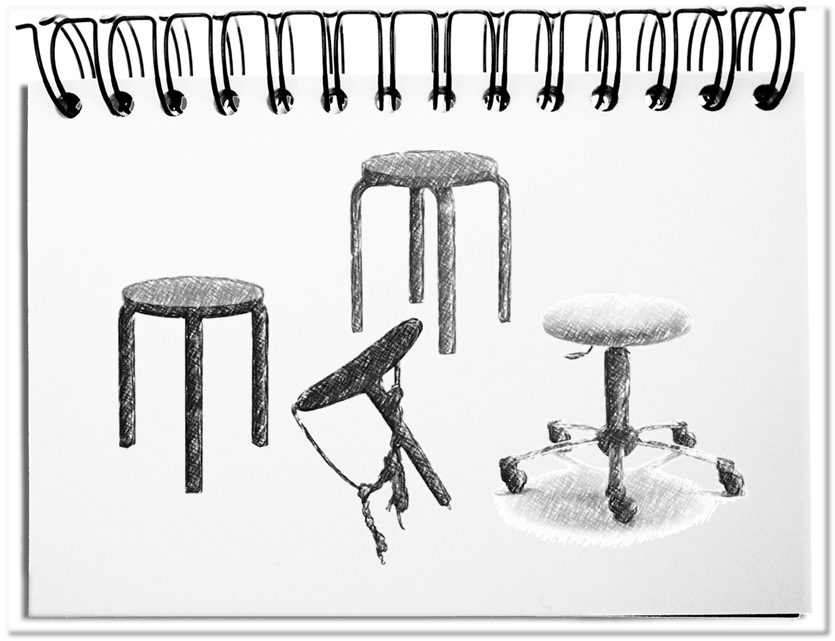Seats differ from each other depending on the use. There is no one and only solution, because the requirements deviate from each other in each case. This becomes evident with the one-legged milking stool that is fastened with a belt and that provides maximum mobility. In contrast, the office chair comes along on five legs and offers maximum stability despite the rollers. Accordingly, businesses need in each case a certain number of pillars in order to fulfill the purpose of the enterprise.
The equivalents of the supporting legs are in business the responsibilities for projects, tasks, products, organizations and similar, which are assigned under one roof. The following thoughts are intended to stimulate the consideration of this question.
- The one-legged approach concentrates on one purpose. The project manager, who is responsible for one project, concentrates just on it and ensures that nothing goes wrong. The available capacity is fully assigned to the project.
- Stability rises, as soon as a further pillar is added. On two legs, it suits better than on one. Employees, who settle two tasks, do not need to give everything. They have thereby a larger variety at work.
- The three-legged approach secures the stable condition. A responsible person has healthy variety with three products. The diversification prevents harmful routine and enables skillful distribution of the available resources. Three main points are within our cognitive abilities and therefore well workable.
- From another leg, arise four sides that topple more easily. Accordingly, organizations that consist of four areas reach a complexity that is still manageable, but already reach an increased risk.
- The five-legged approach has a manageable complexity and stands stable. However, the attention per topic is limited to 20% – in other words four days a month or one and a half hours a day. Thus, the limits of manageability are reached.
- More legs increase the complexity and become less manageable and eventually become too much of a risk. The attention is always absorbed by the “squeaking wheel”. One can take care of the other areas, if they create bigger problems than the others do. The consequence is a swinging back and forth between the areas.
Bottom line: Stability is best achieved from three to five pillars. Keep the number of tasks, products or organizations that are in one responsibility, within this range. As soon as the number continues to rise, the (cell)division into new units is recommended.

